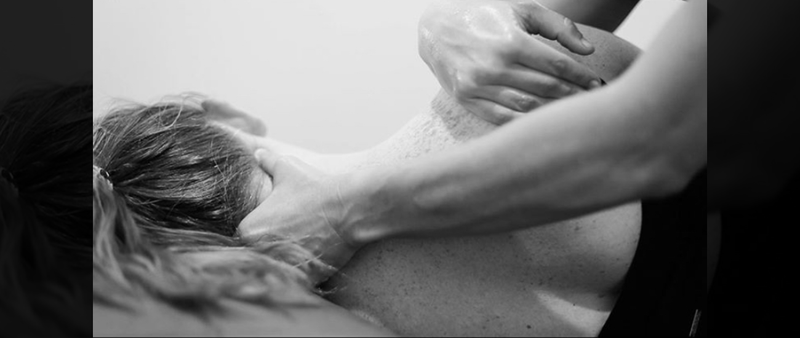
“To maximize training adaptations, you need to take advantage of the effects of both the sympathetic and parasympathetic nervous system, knowing when to excite and when to inhibit.”
“Coach calls time and tells you to finish up, you looked slow, you looked fatigued, you know it and he knows it. You wanted to be there, you felt ready, but you were lagging, nothing was sticking, your training partner could have punched you 5 times before you finally threw that kick. Today just wasn’t your day. You leave the gym disappointed, you go over and over your diet, yet nothing has changed, you arrived at training early and warmed up well like you always do, you used your compression therapy last night, you gave yourself a once over with the massage gun. Then you remember that guy talking about his ice baths, and you google ’cold therapy’ and go book your ice bath in, thinking that will aid in your performance tomorrow”
All the time I hear my clients talking about their recovery toolbox, what else they want to add, and every week I receive questions about massage guns, compression therapy, foam rollers, ice, heat etc etc, there’s a new product out all the time trying to convince you they are going to “enhance your performance and recovery” as an athlete, yet when I turn around and ask my clients the simple question of how their sleep is, or if they’ve had enough time to down regulate, their eyes usually drop to the floor and respond comically with “what’s rest?” which is usually followed up by the ever popular “I’ll sleep when I die” or “yeah I get a few good hours in”. I’ll be the first to admit this was me a few years ago, until I upskilled and educated myself, skimming the surface of the complexity of the human body and all its glory.
There is a hierarchy to recovery, a systematic approach that is needed for your body to be able to function at its peak and holding itself at the top of that pillar is quality sleep and rest. Sleep and rest are the low hanging fruit of recovery, followed closely by diet; which I’m sure most of you have Jordi and his TFD team to thank for sorting that out. However, the sleep routine and the importance given to prioritising rest is on you and you need to take control of that before you go looking for passive therapies and tools to help you recover from your training load. Sleep and rest aren’t sexy, they aren’t worth posting on your socials about, they take the onus off the hustle, the grind, the workhorse stigma but what they are is vital to performance, to longevity in the sport and they are imperative for turning the cogs and allowing the adaptations of training to take hold, physically and mentally.
When I talk recovery with my clients I bring their attention to the Nervous System and more directly the Autonomic Nervous System (ANS) which helps appropriately power all our internal organs based on the information it receives about the body’s state and the external environment surrounding it. Some of the body’s functions the ANS controls include:
- Blood pressure
- Heart and Breathing Rate
- Digestion/metabolism
- Body Temperature
- Balance of Water and electrolytes
The ANS has two main divisions: the sympathetic nervous system and the parasympathetic nervous system. The Sympathetic Nervous System responds by stimulating many of the above functions to prepare the body for stressful or emergency situations by performing actions such as:
- Increasing heart rate
- Dilating airways and pupils
- Increasing sweat
- Releasing stored energy
- Slowing process like digestion and urination
This is why our sympathetic nervous system is often called our “fight-or-flight” system. The Parasympathetic Nervous System, on the other hand, is known as our “rest-and-digest” system. It’s responsible for down-regulating those functions to bring the body back to homeostasis. Examples include:
- Slowing heart rate
- Decreasing blood pressure
- Stimulating digestion
- Relaxing muscles and increasing energy storage
To maximize training adaptations, you need to take advantage of the effects of both the sympathetic and parasympathetic nervous system, knowing when to excite and when to inhibit. But you need to remember that knowing isn’t enough as the ANS regulates itself unconsciously hence the need for ‘retraining’ these responses.
The parasympathetic nervous system is most beneficial to us because it is the state we ideally want to be in the vast majority of time. This is the state our body recovers in most efficiently due to the relaxed state and increased absorption/digestion of nutrients.
These two are vastly different yet most people fall into the category of being Sympathetic dominant given the nature of our busy lifestyles. For a Combat Athlete that fight or flight response is engrained in you, your sympathetic dominant state is over stimulated, as you train it so well each day you begin to lose the ability to naturally move into the parasympathetic state. Although it feels great to train, relying on your SNS all the time can lead to burnout. Think about it; you start your day with training, straight into peak hour traffic to work, to stress of life, bills, family, back to more training, go home, eat, engage with your family, answer emails and scroll socials. You fall into a heap exhausted yet struggle to get to sleep or stay asleep. Yes, your body is fatigued, yes you are tired, but your nervous system is still heightened, you’re still tense, you haven’t given yourself a chance to down regulate, slow down your thoughts or your breathing. Your psychological stressors are still an aggravating contributor; your body can’t differentiate between physical and mental stress, past or present, it sees it all as a threat or something to excite you. Your sleep quality is poor because you are still so heightened. You may not wake up rested, yet you get up to do it all over again. The chronic physical and mental stressors may overtax your body’s ability to adapt and maintain homeostasis; a stable equilibrium between internal, physical and chemical conditions.
Now I’m not saying this is everyone of course, but in my years as a therapist I’ve found it far more common than you would believe and as a high percentage of my clients are combat athletes this conversation is one I’m having regularly. The dominance of the sympathetic state may have also begun from past trauma, all the way back to childhood trauma, PTSD or the likes are a common denominator, your body has learnt to protect itself to survive but hasn’t yet learnt how to down regulate itself now that those past stressors are gone.
Engaging the parasympathetic nervous system, I believe should be more in the forefront of an athlete’s recovery routine, and once you begin to retrain that your body will learn to naturally take on a more parasympathetic state, thus allowing you to reduce stress, anger, chronic tension and inflammation.
Some examples of these are:
- Diaphragmatic breathing– LEARN HOW TO BREATHE BETTER. Who would have thought one may not be breathing effectively, yet this is so common and one of the simplest and most convenient ways to stimulate the relaxation response of your parasympathetic nervous system. Particularly during cool-downs after training, as this can shift your body immediately into a recovery state.
- Meditation or finding a cognitive anchor – Now this isn’t all about the buddha sitting on a mountain edge legs crossed, humming, it can be simply about being mindful and present in the moment. Finding something that allows you to down regulate and escape from the current reality. Reading, music, drawing, shower/bath, sitting in front of a fire, are all examples of this. There are now many apps available to download to help you learn meditative and breathing techniques.
- Massage – speaks for itself, just be mindful of allowing yourself to actually breathe and take in the treatment. If you constantly feel like you’re “on the go” your body is always on tension, and loses its ability to relax, this is often described as Neurological tone, which may lead to chronic pain and inflammation.
- Napping – taking naps and falling asleep quickly are hallmarks or disengaging your sympathetic state. Lay down for 15min if you fall asleep your body needed it, if you don’t you still managed some rest. It’s a win win.
- Disengage from your fitness self – As Arnold Schwarzenegger said:” Having a good time is not so damaging as people think.”
Enhancing performance is about balancing stress and recovery. When you don’t incorporate the act of recovery into your regular lifestyle/training routine you will eventually burn out. Think of your body like a car full of petrol, if you stay “on” and keep idling, you may not wear out the physical appearance, but you will eventually run out of petrol.
Krista Fletcher, Accredited Sports RMT @krista_sportsrmt
